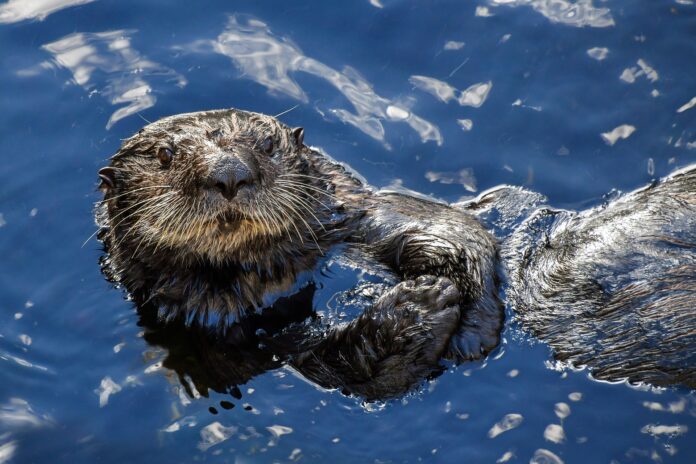Researchers trace transmission of single-celled parasite from land to water
With recent speculations about the travel of pathogens from wildlife to humans with COVID-19, it is interesting to consider different ways that pathogens can travel between species. A recently published epidemiological study conducted by UC Davis in collaboration with other university researchers examined how a single-celled parasite called Sarcocystis neurona traveled from its original host, the Virginia opossum, to sea otters.
To the extent of the researchers’ knowledge, the opossum is the only known animal that can host the development of the reproductive stage of this parasite, according to Patricia Conrad, an associate dean at the UC Davis School of Veterinary Medicine. She explained that proceeding the formation of the sexual stage, the parasite is shed through the opossum’s feces which flows into bodies of water, infecting marine mammals.
“Understanding how these parasites are getting from their terrestrial hosts into marine food webs is a huge puzzle, but one that is important to solve because it affects so many species that use those nearshore waters, including threatened wildlife like sea otters and of course humans,” said Tim Tinker, a research biologist and adjunct professor of ecology and evolutionary biology at UC Santa Cruz.
Shawn Larson, a curator of conservation research at Seattle Aquarium, further explained the specific importance of sea otters to marine life.
“Sea otters are nearshore sentinel and keystone species that are key to a healthy, resilient and functioning nearshore marine ecosystem,” Larson said. “The more we learn about them and their role in the ecosystem from restoring kelp forests to the transfer of pathogens the more we will learn about how ecosystems work and what they need to survive.”
Tinker’s role within this research was to lead the team of researchers who captured and tagged wild sea otters while he was a research scientist with the U.S. Geological Survey (USGS) Western Ecological Survey. He explained that they followed these sea otters and recorded their diets and habitats in order to determine patterns of Sarcocystis neurona infection rates. Together with Tristan Burgess, the lead author of the study, and Christine Johnson, Burgess’ major professor, Tinker developed epidemiological models to compile the collected data.
An interesting result of the study, according to Larson, was that the pathogen was found in sea otters located where there was no evidence of the Virginia opossum in the area.
“There are several possibilities a few of which are that sea otters can pass it to each other without the intermediate host, sea otters from another region, like Washington, that had exposure to opossums migrated to BC, or there are other intermediate hosts for this pathogen that we do not know about yet,” Larson said.
Although she was originally only interested in becoming a veterinarian, Conrad found herself fascinated by single-celled parasites and earned her doctorate from working with them. She initially began working with Sarcocystis neurona because it was found to cause a neurological disease in horses.
When sea otters began to die at an alarming rate, she began conducting serological tests, which essentially measure the presence of antibodies within the organism. By looking for the presence of antibodies against the parasite to indicate whether the animal had been infected or not, this helped determine what infected sea otters were exposed to. Conrad explained that such testing may also be useful for COVID-19 research.
“The thing that is similar is that antibodies in the sea otters are indicators that the sea otters have been infected with this parasite just like antibodies in the serum of humans will be an indicator that humans have been infected,” Conrad said.
As this was a large-scale study, Conrad explained that it was important to emphasize how this study illustrates a good example of a big team of people working together. Tinker added that researchers from varying fields, from wildlife biologists to landscape ecologists, contributed to this study.
“To me, one of the most important messages is that understanding disease processes in wildlife species is a major challenge: it is important to all of us because these diseases also affect human health and the health of the ecosystems we rely on,” Tinker said. “But they are often very difficult puzzles to solve: finding answers takes time, and most importantly it takes cooperation and collaboration among specialists from many different disciplines, as we saw in this study.”
Written by: Michelle Wong — science@theaggie.org




